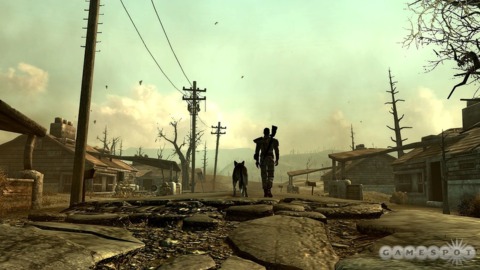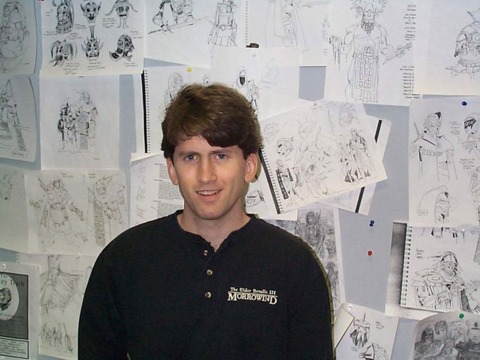Bethesda's Howard discusses re-arming Fallout
D.I.C.E. 2009: Game director explains how the Elder Scrolls developer turned the left-for-dead postapocalyptic RPG franchise into a modern-day blockbuster.
LAS VEGAS--Some developers may have balked at the idea of making Fallout 3. Turning Interplay's classic (and canceled) PC role-playing franchise into a PC/console action RPG was all but certain to outrage the series' notoriously fickle fan base. But that's exactly what Bethesda Softworks did, licensing the Fallout name in 2004 before buying it outright in 2007. As Fallout 3 director Todd Howard explained during his D.I.C.E. Summit presentation, the reward was more than worth the risk.

"Great ideas never, never die," Howard said. "We were in love with the first game and felt it needed to be done again."
That confidence in a game is essential, Howard said, adding, "You have to really have faith in your idea because there is no data that will prove it valid." Charts and graphs and details such as install base shouldn't play into the decision to make a game, he said. If install base mattered that much, he noted, then everyone would just keep making board games because there are a whole lot of tables out there.
However, great games need more than just great ideas. Howard said that it's excellent people who make excellent games, and the two are inseparable. To that end, Howard said that Bethesda is careful about how it fills out its ranks. The company tries its best to hire self-reliant people who feed into a culture of quality, and diligently maintains a "low ***hole quotient."
"Your plan is not as important as your culture," Howard stressed. "There are always problems with the schedule, and the culture will help solve them."
As for the game development itself, Howard had three key points. First off, the developers need to define the experience that they want players to have. For Fallout 3, that meant boiling down the success of the first games to a handful of key points. The team looked at old reviews to get the reaction to the game without benefit (or hindrance) of historical perspective. For Fallout, that meant some iconic elements, such as the vault suits and settings, over-the-top violence, the attention to dialogue, and the VATS combat system.
Howard's second point of emphasis was to keep it simple, which he appropriately enough did very little to expand on. Finally, Howard said that great games are played, not made. For the final five months of development, Bethesda's art team was just playing the game extensively to tune and optimize every aspect of it.
"You can have a great design doc, but you're going to change it as soon as you play it," Howard said, adding, "You have to be ready to throw out the ideas that you think are the greatest."
Howard noted that the team had originally created a Washington, D.C., in Fallout 3 that was twice as big as the one in the final game. But after playing the game for some time, the team eventually determined there was just too much wasteland there without enough gameplay. When it came time to tell people that their last six months of work building out the city were being scrapped, that's when the respectful culture that Bethesda had worked to build proved its worth.
For more on the finished product, check out GameSpot's review of Fallout 3.
Got a news tip or want to contact us directly? Email news@gamespot.com

Join the conversation